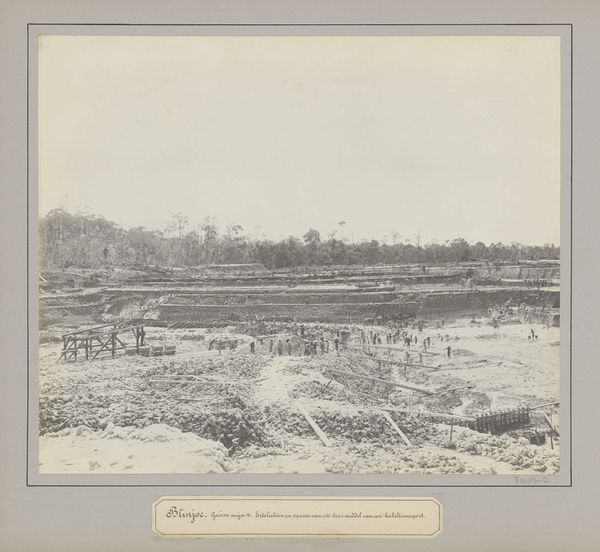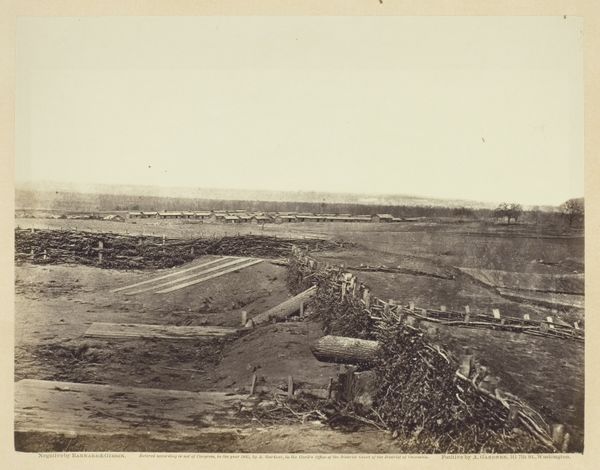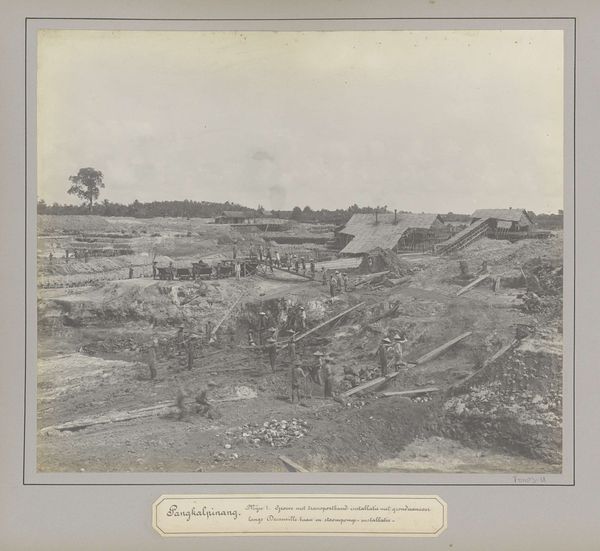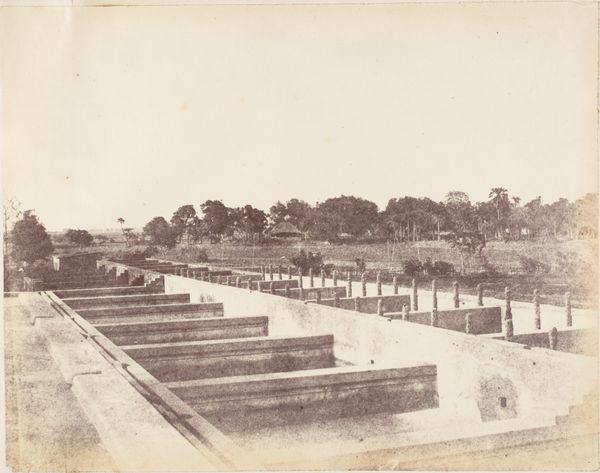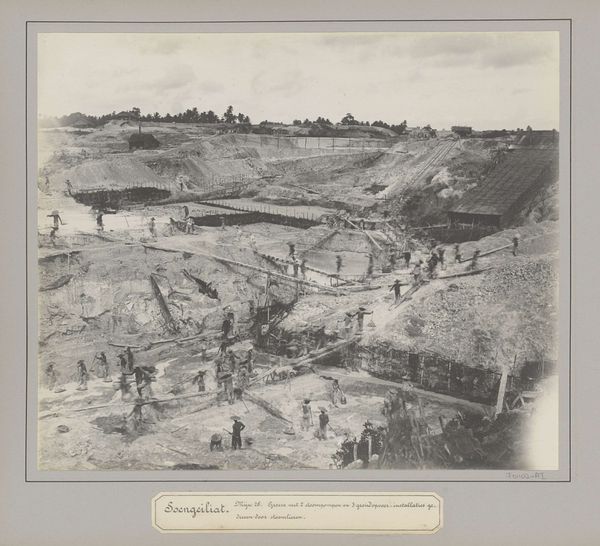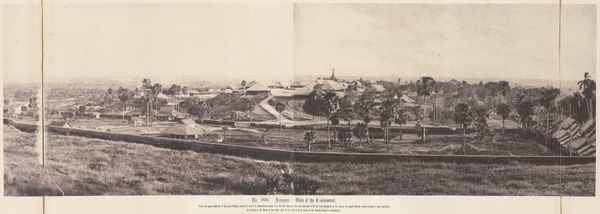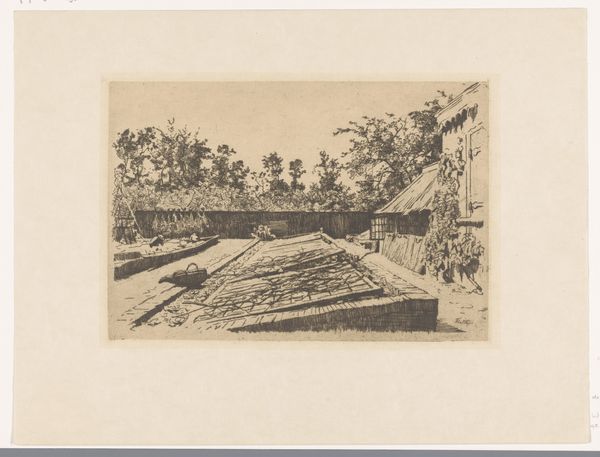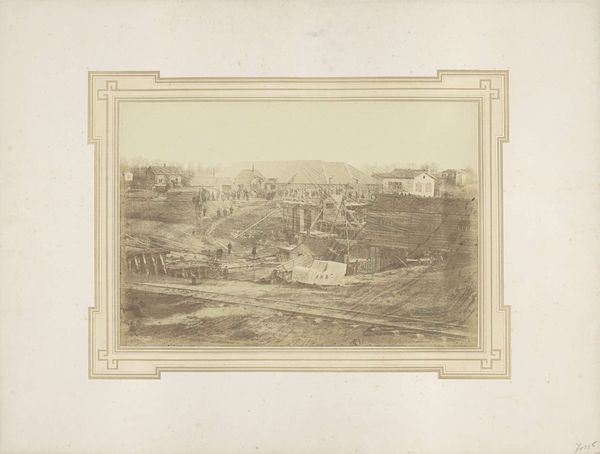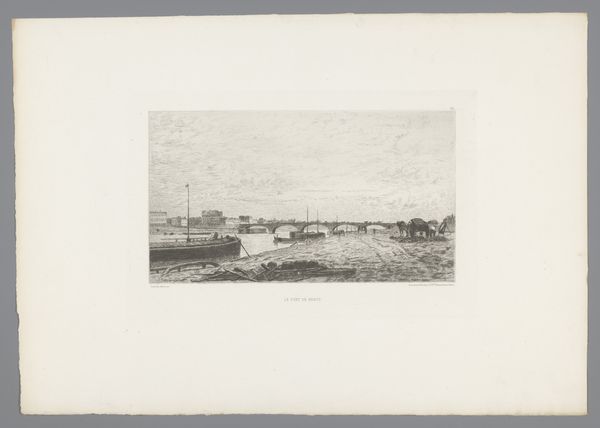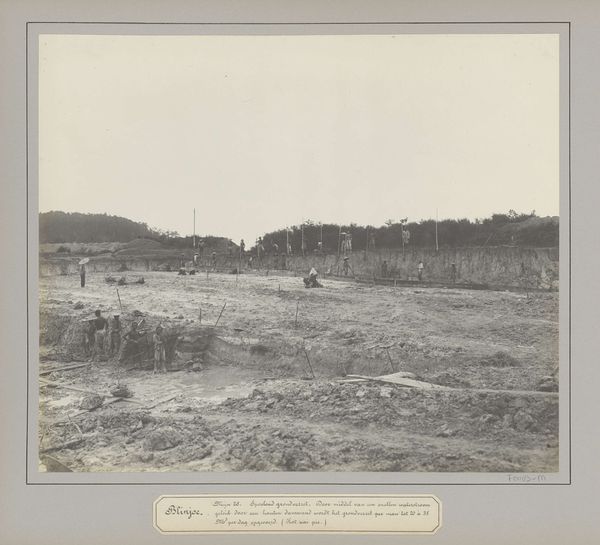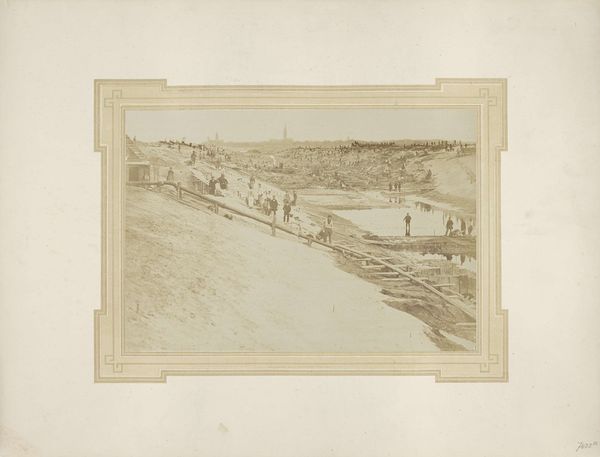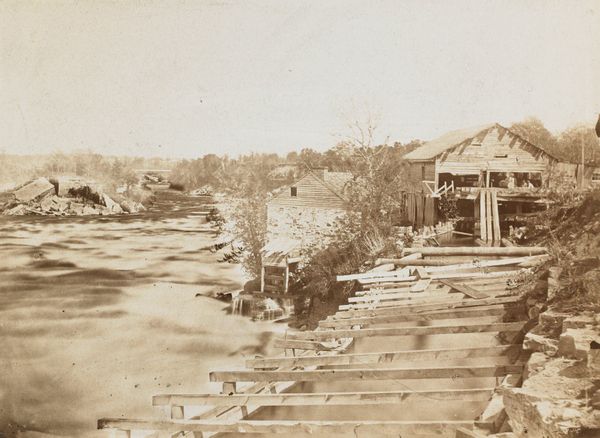
print, photography
# print
#
landscape
#
photography
#
orientalism
#
realism
Dimensions: height 286 mm, width 240 mm
Copyright: Rijks Museum: Open Domain
Editor: Here we have an early photograph, "Wasplaats voor tinerts te Belinyu," or "Tin Ore Washing Plant in Belinyu," taken around 1900-1920. It's by an anonymous photographer and it depicts what appears to be a mining operation. The thing that immediately strikes me is the seemingly relentless nature of the work it depicts; the land is completely torn up. How do you interpret this image? Curator: This image, seemingly a straightforward depiction of a tin ore washing plant, speaks volumes about the socio-political context of its time. We need to consider it within the framework of Dutch colonial expansion and its impact on the Bangka-Belitung Islands, which were rich in tin. Editor: How so? Curator: Consider the power dynamics. The photo, while ostensibly documenting industry, inadvertently reveals the human cost of resource extraction. Who are the laborers here, and what are their lives like under colonial rule? Photography at this time also had an ambivalent relationship with imperialism – functioning simultaneously as a tool for documenting progress and a means of control. Think about how this image might have been used back in Europe. Editor: So it’s less a neutral document and more of a justification for colonial activity? Curator: Exactly. What do you notice about the composition, for instance, how the land and sky is composed? Editor: I guess there’s almost no sky, the earth dominates everything. It does have a… suffocating feel. I initially just saw an industrial landscape. Curator: By considering the historical and cultural context, we move beyond the surface and recognize the photograph as a powerful artifact. It is not simply a depiction, but an encoding of power relations. Editor: That’s fascinating. I never would have considered the photograph as being more about colonial power than industry without understanding that background. Curator: Precisely. Art, especially historical work like this, is always more than meets the eye.
Comments
No comments
Be the first to comment and join the conversation on the ultimate creative platform.
